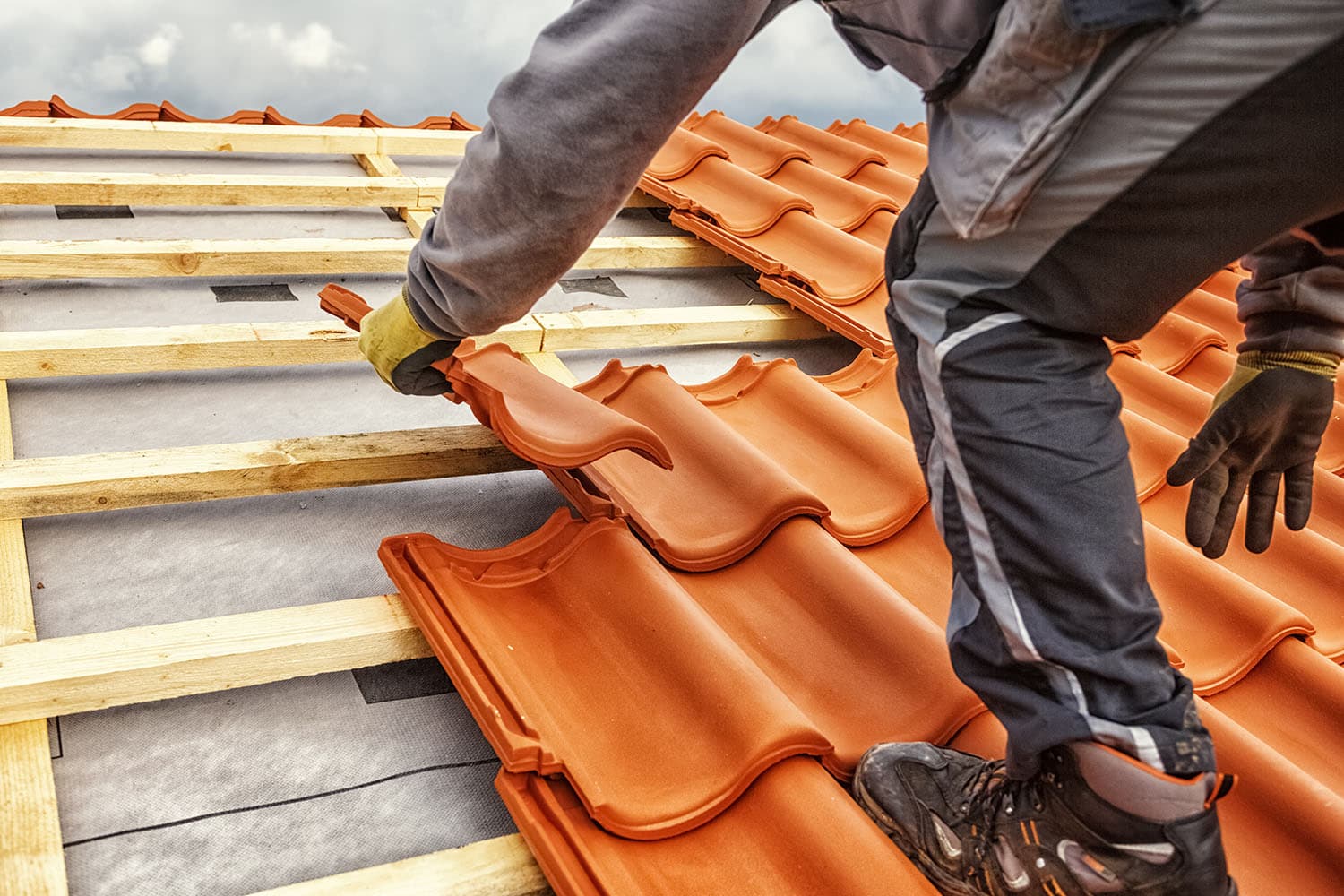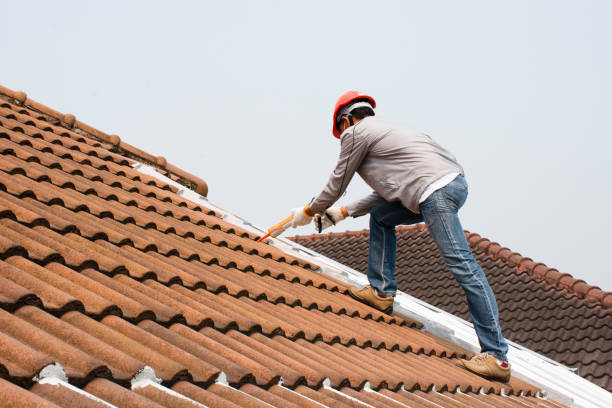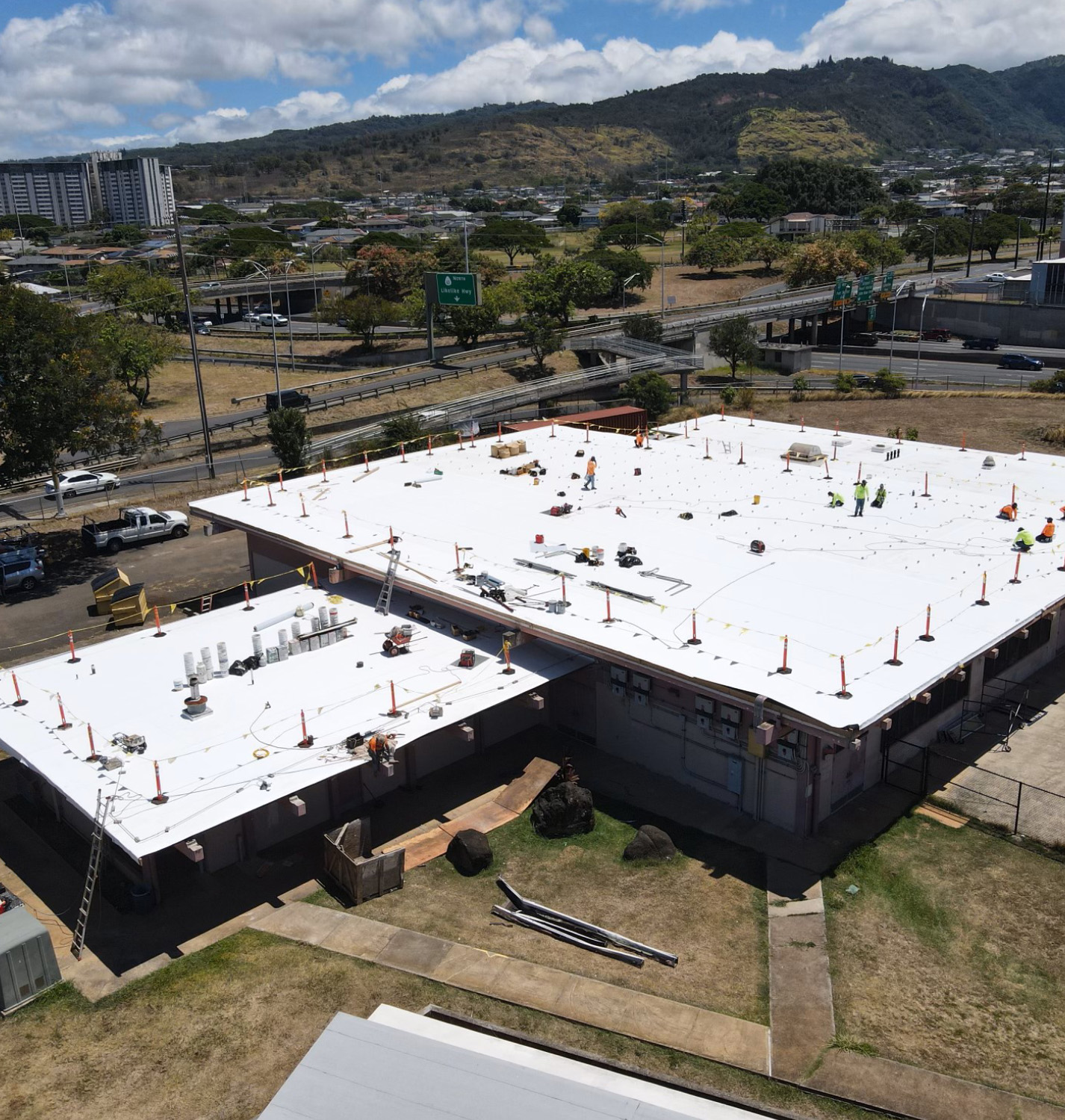Common commercial roofing honolulu Mistakes and How to Avoid Them
Common commercial roofing honolulu Mistakes and How to Avoid Them
Blog Article
The Ultimate List for Roofing Install: Ensuring Top Quality and Sturdiness
The process of mounting a roofing system needs careful focus to detail. A thorough checklist can assist assure top quality and resilience throughout the task. From assessing the existing roofing condition to choosing the right materials, each step is necessary. Appropriate prep work and tools play an essential duty in attaining an effective installation. Lots of forget the relevance of final examinations and recurring maintenance. Understanding these components can considerably affect the durability of a new roofing.
Examining Your Existing Roofing System Condition
How can one efficiently determine the condition of their existing roofing? A complete inspection is essential for evaluating a roofing's stability. Homeowners need to begin by taking a look at the roof from the ground, trying to find visible indicators of wear such as missing out on roof shingles, sagging areas, or discoloration. Closer assessment can be done by accessing the roof covering itself, where one ought to look for fractured or curled tiles and evaluate flashing around vents and chimneys.Additionally, the inside of the home warrants interest; water stains or mold and mildew growth on ceilings and walls might indicate leakages. Attic inspections can expose potential issues, such as insufficient air flow or signs of moisture.Regular examinations, preferably twice a year, can assist identify issues early and stop pricey fixings. By comprehending the roofing's current state, home owners can make informed choices about necessary upkeep or substitutes.
Selecting the Right Roof Covering Materials
When selecting roofing materials, what aspects should homeowners consider to assure a long lasting and effective selection? Initially, the climate plays a considerable duty; materials ought to stand up to regional climate condition, whether it's heavy rain, snow, or extreme sun. Next off, the long life of the product is necessary; options like steel or slate offer extended life expectancies contrasted to asphalt tiles. Homeowners need to likewise review the material's weight, as this can affect the structural stability of the home. In addition, aesthetics issue; the chosen product should enhance the overall building style. Power effectiveness is another consideration; some products show warm, lowering cooling prices. Finally, budget restraints will certainly dictate choices; while some products might have a lower ahead of time expense, lasting resilience can bring about higher financial savings. By considering these aspects, house owners can make educated choices that enhance their roofing's high quality and longevity.
Planning for Installment
Before the installation process starts, homeowners must ensure that their residential or commercial property is appropriately prepared to suit the brand-new roofing. This preparation includes several crucial steps to guarantee a smooth and reliable installment. Property owners ought to clear the location around the home of any debris, devices, or furniture that might prevent gain access to for service providers. Furthermore, it is necessary to notify neighbors concerning the forthcoming job to lessen disruption and safe cooperation.Next, property owners need to examine their existing roof covering and architectural components, addressing any kind of possible concerns such as deteriorating wood or leakages that could influence the setup. Furthermore, protecting essential permits and adhering to local building ordinance is necessary for conformity and safety and security. Scheduling the installment throughout desirable weather condition problems assists protect against hold-ups and warranties that the work profits without complications. Proper prep work sets the foundation for a successful roof job, eventually boosting the longevity and effectiveness of the brand-new roof covering.

Crucial Devices and Devices
In roof setup, having the right tools and tools is crucial for a successful job. This consists of important safety equipment, numerous roof installment tools, and effective material taking care of devices. Correct prep work and choice of these things can greatly boost performance and safety on the work website.
Safety Equipment Needs
Security equipment is an important component of any kind of roofing system setup project, ensuring the well-being of workers at raised elevations. Vital safety devices consists of construction hats, which protect against dropping debris, and security goggles to secure the eyes from dust and particles. Non-slip shoes is significant for maintaining grasp on steep surface areas, while harnesses and lanyards offer autumn protection, avoiding significant injuries. Gloves aid shield hands from sharp materials and minimize exhaustion during prolonged durations of work. Additionally, high-visibility vests improve exposure, promoting awareness amongst staff member and close-by workers. The usage of ear defense may additionally be a good idea in noisy settings. In general, sticking to security equipment demands is essential for a safe and effective roofing setup procedure.

Roof Setup Tools
Proper precaution lay the groundwork for an effective roof covering project, yet having the right devices and equipment is similarly essential. Necessary devices for roof covering setup consist of a ladder, enabling secure accessibility to the roofing, and a roofing nail gun to guarantee effective and secure fastening of materials. A chalk line is crucial for marking straight lines, while an energy blade is required for cutting roof products properly. Furthermore, a lever help in removing old shingles. Employees ought to also have a degree to confirm correct alignment and drain. Ultimately, a good set of work gloves shields hands while offering grip. Together, these devices promote a smooth roof covering procedure, boosting both top quality and durability.
Product Handling Devices

A range of material handling devices is vital for an effective roofing installation procedure. Equipment such as forklifts, lifts, and dollies facilitate the activity of hefty materials like shingles and underlayment to the job website and onto the roof covering. Utilizing scaffolding and ladders guarantees safe access to elevated areas while minimizing the threat of injury. Tarps and bins are essential for correct storage space and organization of products, avoiding damages and guaranteeing very easy access. Furthermore, a crane may be needed for larger roof projects to raise considerable products directly onto the roof covering. Proper training in operation this devices is necessary; it boosts workflow performance and adds to total job security, ensuring an effective roof installment.
Step-by-Step Installation Refine
The detailed installment process is crucial for an effective roof installment. It starts with preparing the roof surface area, followed by the correct installment of underlayment, and wraps up with the effective safeguarding of roofing products. Each of these steps plays a vital duty in ensuring the durability and functionality of the roofing.
Prepare the Roof Surface
Preparing the roofing surface area is necessary for making sure an effective setup of roof materials. This procedure begins with a detailed inspection to determine any type of existing damage or debris. Any type of loose tiles, protruding nails, or old roofing products have to be removed to create a clean, smooth structure. Next off, the roof covering deck should be looked for rot or architectural problems, as these can compromise the honesty of the new roof. After repair work, a complete cleaning is essential; this includes sweeping away dirt, leaves, and any kind of various other contaminants that could hinder bond. Ultimately, making certain appropriate water drainage and ventilation is crucial, as these aspects affect the durability of the roof. A well-prepared surface area sets the stage for perfect installment and durability.
Mount Underlayment Properly
Setting up underlayment appropriately is fundamental for boosting the total efficiency of the roofing system. The process starts with picking the ideal underlayment product, which can include felt, synthetic, or rubberized options. Next, validate the roofing system surface is tidy and dry prior to laying the underlayment - commercial roofing honolulu. Begin at the most affordable factor of the roofing, turning out the underlayment horizontally and overlapping each row by a minimum of six inches. It is necessary to secure the underlayment in place with staples or roof nails, avoiding gaps or creases that might jeopardize water resistance. Trim excess material at the sides, assuring a neat coating. This meticulous installation action is crucial for offering an added layer of security against wetness and enhancing resilience
Safeguard Roof Covering Products Efficiently
After verifying the underlayment is properly installed, the following action includes safeguarding the roof products successfully. The roof covering specialist ought to collect all essential products, including roof shingles, nails, and blinking. Beginning at the most affordable factor of the roof covering, shingles must be laid in a staggered pattern, verifying appropriate overlap to stop leakages. Each shingle has to be fastened with nails, utilizing the maker's advised spacing and amount. It is necessary to drive nails directly, avoiding over-penetration, which can endanger the material. Blinking must be installed around smokeshafts and vents to improve waterproofing. The service provider ought to perform a comprehensive assessment to confirm all materials are firmly secured, as this will substantially influence the roofing system's overall durability and long life.
Performing Last Inspections
Detailed last assessments are necessary to ensure that a freshly set up roof satisfies all safety and high quality standards. This critical step includes examining the whole roof for any kind of prospective issues that may develop post-installation. Inspectors must take a look at the placement of shingles, making particular they are here effectively safeguarded and devoid of issues. Blinking and air flow systems have to also be examined for correct installment and functionality.Additionally, the inspector must inspect seamless gutters and downspouts to validate they are properly placed to help with water drain. Any indicators of leaks, misaligned materials, or insufficient sealing around infiltrations should be addressed quickly. Roofing contractors need to likewise make sure that all particles from the installation process is eliminated, leaving the site tidy and risk-free. Performing these thorough examinations assists prevent future issues, ultimately extending the lifespan of the roofing and offering home owners with assurance regarding their financial investment.
Preserving Your New Roof
Correct upkeep is vital for assuring the long life and efficiency of a brand-new roofing system. Property owners need to carry out routine evaluations at least twice a year, preferably in springtime and fall, to determine potential concerns early. Throughout these examinations, they must seek indicators of damage, such as missing tiles, leaks, or debris buildup, which can hamper water drainage and advertise mold and mildew growth.Cleaning gutters and downspouts is necessary, as clogged up systems can result in water damage and architectural issues. Additionally, cutting looming branches can protect against abrasion and debris buildup on the roof surface.It's additionally recommended to arrange professional evaluations every couple of years to assess the roof covering's condition extensively. Keeping records of upkeep tasks and repair work can assist track the roofing system's efficiency gradually (honolulu roofing materials). By sticking to a constant upkeep regimen, home owners can protect their financial investment and guarantee their new roofing system stays effective for years to come
Regularly Asked Concerns
For how long Does a Typical Roofing Installment Take?
The period of a normal roofing setup varies based on aspects such as roof size, materials, and climate condition. Usually, it can take anywhere from one day to a number of weeks to finish the installment.
Can I Install a New Roof Covering Over an Existing One?
The inquiry of setting up a new roofing over an existing one often arises. Many property owners consider this choice for cost-effectiveness, but it is necessary to review neighborhood structure codes and the architectural integrity of the existing roof.
What Permits Are Required for Roofing Installation?
Prior to installing a roof, one have to examine neighborhood regulations. Normally, structure licenses are needed, in addition to evaluations to assure compliance with safety and security criteria and zoning legislations. Consulting with neighborhood authorities is important for proper support.
What Warranties Are Available for Roof Materials?
Numerous warranties exist for roofing materials, generally including maker guarantees covering defects and efficiency. Additionally, some specialists offer craftsmanship warranties, guaranteeing installation top quality. Purchasers should thoroughly assess terms to comprehend insurance coverage period and restrictions.
Exactly How Can Weather Impact the Setup Refine?
Weather considerably impacts the setup procedure, as rain, snow, or severe temperatures can delay work, influence material adhesion, and concession security. Appropriate preparation and organizing around weather report are crucial for effective roofing system installation.
Report this page